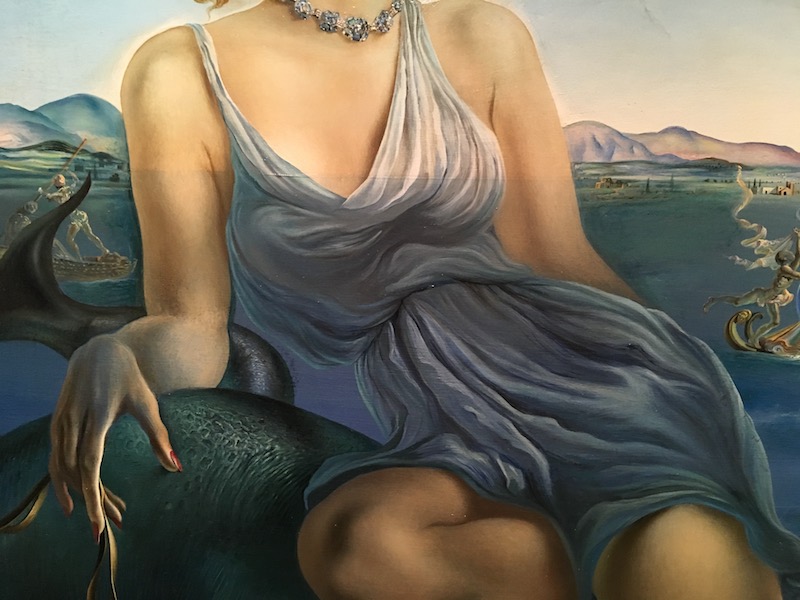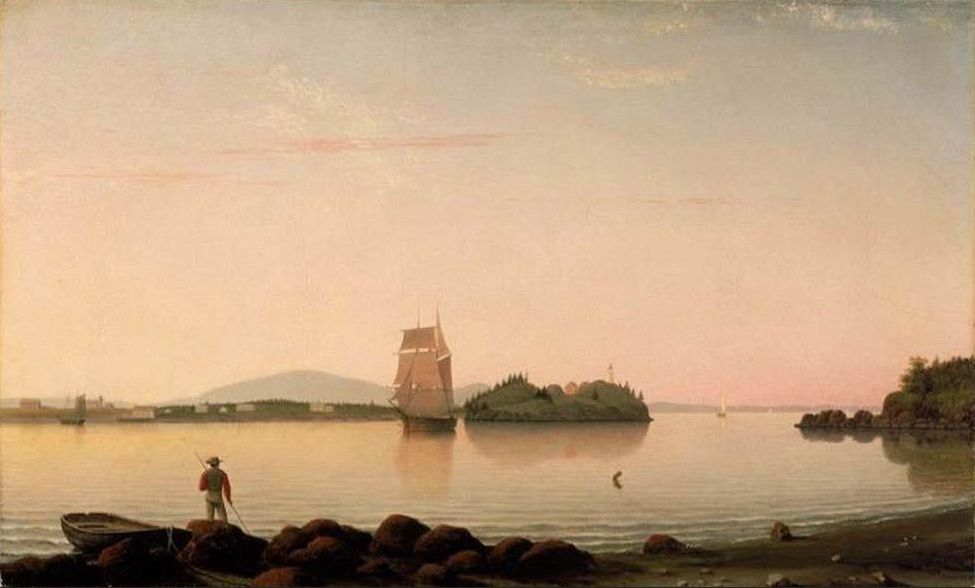DALI BLUE
One of the characteristics of oil paint is that it grows transparent as it ages. When the paint is applied in thin glazes, underwork eventually begins to show through. As in Salvador Dali’s “Portrait of Dorothy Spreckels Munn” (1942) in the DeYoung Museum in San Francisco.
Here we can see that Dali hogged in the whole piece from the horizon line down in blue, and then painted the foreground, including the figure, on top. Now the foreground glazes are going transparent, and the underpainting begins to tint what lies over it. This is especially visible in her right arm, but in fact the whole figure, including her dress, are noticeably darker and cooler below the horizon than above.
This is quite a common effect in older paintings done in glazes. Below, “Owl’s Head, Penobscot Bay, Maine,” (1862) by Fitz Hugh Lane. It was painted from back to front; the farther shore and far mountains, laid in first, are visible through the sails of the ship. Working this way let the artist build the image in thin, delicate tones, and saved him from having to fill in pesky little background shapes that might muddle the main action.
Considering that transparency is an old and well-known characteristic of the medium, you’d have thought that Dali would have been more adroit.


